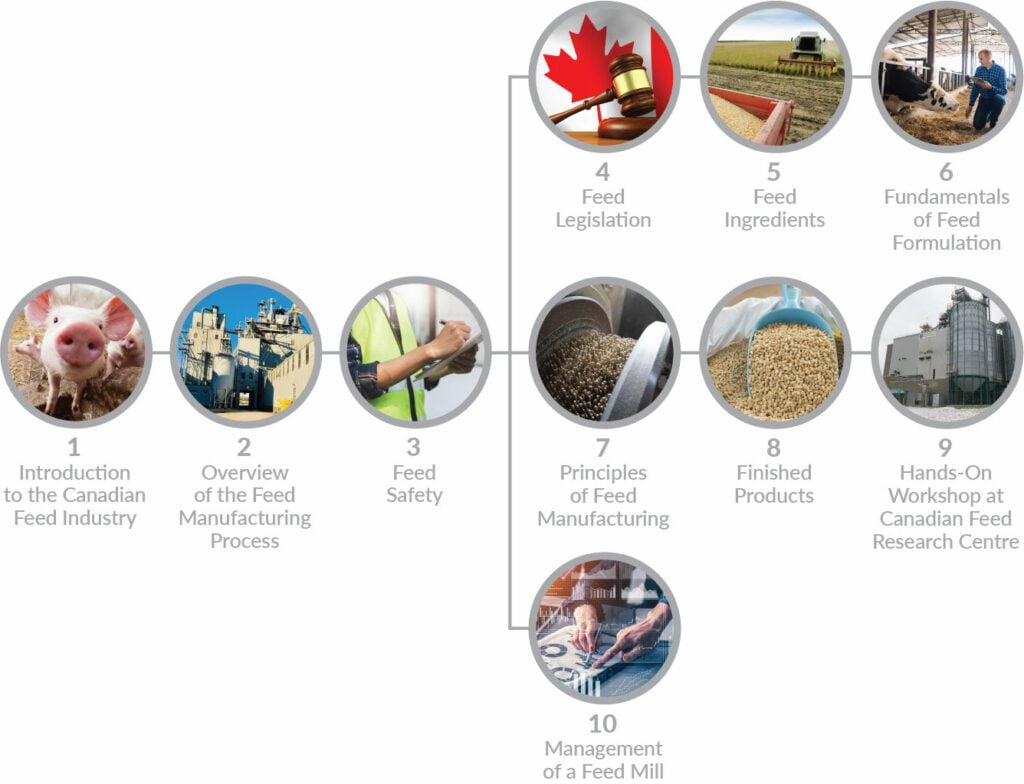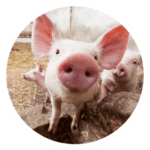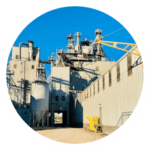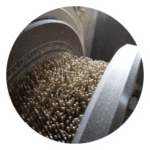
The Canadian Feed Industry Education Program (CFIEP) provides individuals with the opportunity to learn about the specifics of the Canadian livestock feed industry. Developed by the Animal Nutrition Association of Canada in collaboration with the University of Guelph and the University of Saskatchewan, this modular course combines foundational knowledge with industry expertise to offer meaningful insights that learners can apply to their various roles throughout the industry.
The program is comprised of nine online learning modules and one in-person hands-on module as outlined by the graphic below. Each of the 10 CFIEP modules focuses on a different aspect of the feed industry, allowing you to take an in-depth look at each facet and understand how they come together to form a diverse yet integrated whole.

CFIEP Program Description
The livestock feed industry is an essential part of Canada’s agri-food economy and food value chain. This sector depends on the contributions of a wide range of stakeholders, from grain growers to nutrient supplement suppliers, to provide the safe and high quality feed needed to produce animal food products for Canadians and the broader international community.
Designed for those working or planning to work in the Canadian feed industry, this program examines topics including feed safety, legislation, ingredients, nutrition, manufacturing and feed mill management, and highlights how each impacts daily feed industry operations. Develop and advance your understanding of the recent challenges and latest innovations in quality assurance, legislation and the feed manufacturing process. Learn how to apply industry best practices in your role in the Canadian feed industry and directly contribute to meeting the responsibilities and challenges in day-to-day feed operations across the feed chain.
Online, topic-specific modules taught by feed industry subject matter experts will be valuable to seasoned professionals and newcomers alike, including nutritionists, research personnel, QA/QC staff, sales specialists and managers.
The first three modules form the foundation of the program; learners are strongly encouraged to complete all three before continuing along one of the three learning paths depicted in the diagram above. Upon successful completion of the nine online modules, learners will earn the Canadian Feed Industry Education Program certificate issued by ANAC.
For further information about CFIEP, please email CFIEP@anacan.org.
Target Audience
Program registrants include those who wish to deepen their understanding of the feed industry including:
- students and professionals starting a career in the feed industry
- feed industry professionals looking to upgrade their knowledge and training
- industry stakeholders
- government representatives
- academics
Program Learning Outcomes
By the end of this program, you will be able to:
- Explain the role and importance of the Canadian feed industry within the agri-food chain.
- Outline the importance of feed safety and apply best practices during each step of the feed value chain.
- Interpret regulations governing livestock feed in Canada and apply the standards to feed industry operations.
- Explain how feed is formulated to meet the optimal health and nutritional requirements of livestock.
- Describe the manufacturing process for a variety of feeds from procuring ingredients through to shipping the finished product.
- Identify the essential elements required to successfully manage a feed mill.
- Use terminology specific to the industry and identify key industry resources.
Registration is open for:
Module 1 : Introduction to the Canadian Feed Industry

The Canadian feed industry processes raw ingredients into feed for livestock. The industry is comprised of many segments including ingredient and mixed feed manufacturers, as well as distributors, who all play a key role in the agri-food chain by ensuring the delivery of a nutritious and safe product for livestock to consume.
Explore how the Canadian feed industry evolved to become what it is today. Learn about the variety of stakeholders influencing the inner workings of the feed industry including livestock producers and consumers, as well as the role of the Animal Nutrition Association of Canada in representing the industry. Current feed industry trends and challenges will also be highlighted.
Module 2: Overview of the Feed Manufacturing Process

Livestock feed manufacturing is a complex process involving a wide range of specialized steps that must be carefully coordinated by feed mill staff.
Explore the feed manufacturing process from ingredient procurement to delivery of the final product, as well as the equipment used to make it all happen, through photos and videos taken inside a functioning feed mill.
Module 3: Feed Safety

Feed and food safety are critical elements of animal production. The feed industry has a responsibility to ensure the feed they manufacture meets a high standard.
In this module, you will examine the elements of feed safety programs and best practices which ensure manufactured feed is safe for the livestock consuming it and subsequently for humans consuming animal products (i.e. milk, meat and eggs). This module will also introduce the FeedAssure® program which is the gold standard in feed safety in Canada.
Module 4: Feed Legislation

The Canadian feed industry is highly regulated, which is reflected in the processes and day-to-day operations of companies involved in the industry. The feed industry is regulated by several federal legislations, although provincial legislations also apply in some circumstances.
In this module, you will investigate the federal legislation governing the Canadian feed industry. You will learn the importance of the regulations and the way they impact different steps in the feed value chain. The key legislation for the industry, the Feeds Act and Regulations will be explored, and other acts and regulations that govern the feed industry will also be presented at a high level.
Module 5: Feed Ingredients

Manufactured feed includes a range of ingredients to ensure it meets the unique nutrient requirements for all livestock.
Discover the variety of available feed ingredients and how they are incorporated into a manufactured feed. Review the regulatory requirements applicable to feed ingredients. Learn about assessments used by feed manufacturers to determine the quality and nutritive value of the ingredients.
Module 7: Principles of Feed Manufacturing

The objective of feed manufacturing is to produce a consistent feed that meets the needs of the animal and the producer. A series of processes within a feed mill transform feed ingredients into various finished products that deliver optimal nutrition in the most palatable form.
Examine the various manufacturing techniques available at each stage of the manufacturing process, including innovations that have helped shape these processes in the modern feed industry. Investigate the factors considered when selecting processes and parameters for different species to ensure their unique requirements are met.
Interested in registering for CFIEP now or in the future?
Email CFIEP@anacan.org with any further questions.


